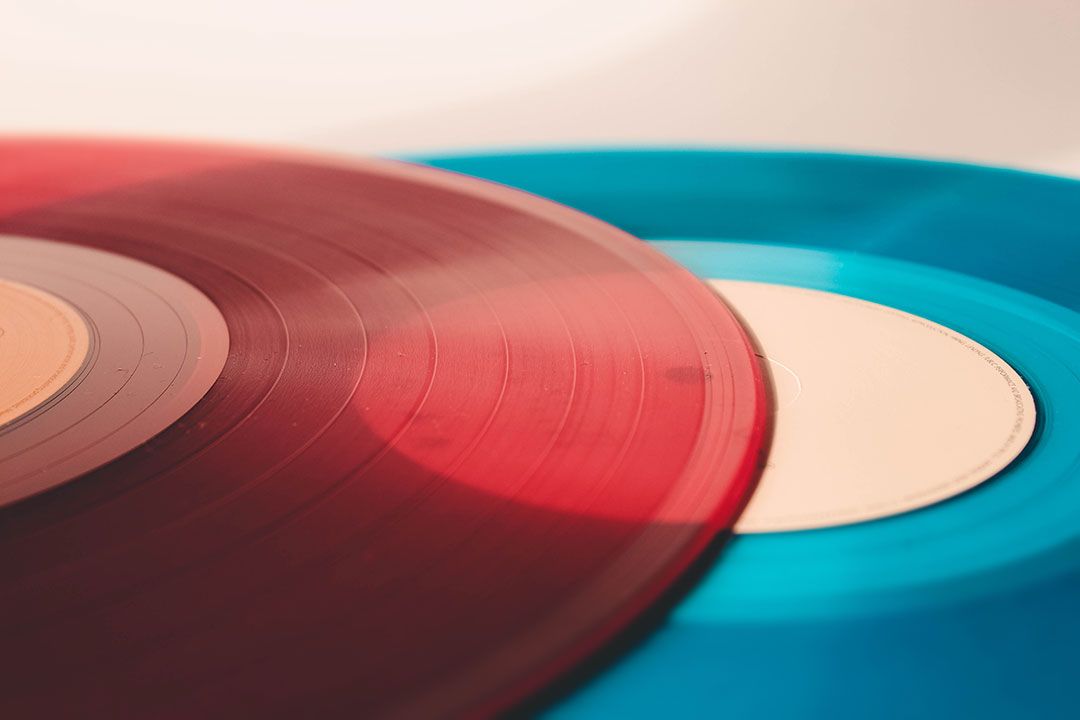What is music doing in psychotherapy? Is there anything special about the music selected for psychedelic-assisted psychotherapy? Is it doing anything special? How did it get there to start with? Do we know what it’s doing? These questions intrigued me most as a researcher on MAPS psychedelic clinical trials.
People who learned about psychotherapy as a type of “talk” therapy find something strange about this novel approach. What catches them off-guard? They are encouraged to listen to music during their therapy sessions when people receive MDMA or classical psychedelics such as psilocybin. They don’t have to listen to it. Participants can request periods of silence, but it is available throughout the session.
Follow your Curiosity
Sign up to receive our free psychedelic courses, 45 page eBook, and special offers delivered to your inbox.A Journey Within: the nature and type of music used in psychedelic psychotherapy
There is no one musical genre or form best suited for psychedelic-assisted psychotherapy. So far, music has been drawn from various realms. They include: classical music, Western art music, world music, folk music, movie soundtracks, electronic music and jazz. It is possible that music from other genres will be used as the number of places and people conducting psychedelic-assisted psychotherapy expands.
Much of the music used within psychedelic-assisted psychotherapy is not especially “trippy.” Rather, the music is there to evoke and support emotional experiences, including emotionally intense memories, thoughts or experiences [1]. However, it should not be too pushy in what type of emotions it calls forth. Most of the music used in psychedelic-assisted sessions is instrumental, and when there are vocals present, they are in an unfamiliar language. This is to make sure that the music is not conveying a specific meaning or telling a specific story. The music should also be culturally appropriate. Thus making it easier to follow and convey emotion rather than drawing attention to itself by use of too “strange” or jarring melodies or tones.
Calm Down to Dial Up
Music used for psychedelic-assisted psychotherapy is not all calm and soothing, either. While the music is not intended to stand in the foreground, it is not intended to sit in the background either. Rather, it is in the difficult position of being a soundtrack that provides listeners with a very general narrative arc without providing any details. At first, the music may be quiet, and slow. Whereas later pieces may invite or allow experiencing deeply felt emotions, while finally leading listeners back toward a modicum of calm. Music in the middle of the session may be intense and dynamic, suitable for people in the throes of powerful emotions. It can be fierce with anger, chattering with fear or heavy with sorrow. Some pieces are fitting for a hero in a movie, supporting people in their own heroic journeys.
Using music as part of a psychedelic experience is likely as old as its use within healing or spiritual settings with psychedelics, such as ayahuasca ceremonies. Combining psychedelics with psychotherapy is a considerably younger practice. However, music has been involved nearly from the start, when Grof began working with lysergic acid diethylamide (LSD) in psychotherapy [2]. Grof, in turn, influenced later research with psilocybin and MDMA where the setting, including the use of music, became a mainstay in the protocols.
Music: making healing from psychedelics stronger?
Is music making the symptom reductions seen after psychedelic-assisted psychotherapy greater or stronger? We don’t know for certain. But there is evidence suggesting that it does. Mendel Kaelen, a researcher at Imperial College London, and his colleagues conducted some of the first studies examining the combined effects of music and psychedelics. They noted that emotional response to music was even greater when people listened to music under the influence of LSD [3]. In a subsequent study, Kaelen et al. went on to study the specific responses to and effects of music heard during psilocybin sessions given to people with depression [4]. Kaelen found that when the music was liked, listeners experienced it as following their trajectory and as guiding. While participants who disliked the music, experienced it as at odds with their session journey or did not find it guiding did not improve as much.
No clinical trials studying MDMA and music have taken place. But a study looking at emotional response to memory reported that people reported their “best” memories as even more pleasant when given MDMA, and that their “worst” memories seemed less intense [6]. Music may spark more of those memories, while MDMA might give people the strength to face those music-sparked memories or feeling.
What don’t we know?
Despite the growing number of findings about how music and psychedelics come together, within or outside of psychotherapy, there is still much to learn about the topic. At the most basic level, we do not know what would happen if you removed music from psychedelic-assisted psychotherapy. No studies have directly compared therapy conducted with and without music.
We don’t yet know if some of the features of music suggested as influencing emotion generally have the same effects when played during an MDMA or psilocybin session. We know very little about the specific subjective or therapeutic effects of music within MDMA-assisted psychotherapy. Why? To date, all studies have looked at classical psychedelics such as psilocybin or LSD. No one has compared the similarities and differences between music used for the two types of substances. We also don’t know how listeners outside of Europe or North America respond to the music.
Following Your Ears: publicly available playlists, and future platforms
You don’t have to have psychedelic-assisted psychotherapy to find out what the music used within it is like. Spotify hosts a number of publicly available playlists designed for use during psilocybin or MDMA sessions, or intended to suggest appropriate music. Johns Hopkins University researchers published a playlist of music used in their psilocybin studies. Shannon Clare Carlin, Associate Director of MAPS Therapist Training, also maintains a series of lists meant as guides and exemplars for use within MDMA-assisted psychotherapy. A few sample playlists within that series are provided below.
Leading expert Mendel Kaelen has likewise developed a playlist for suggested use in MDMA-assisted sessions and for psilocybin-assisted sessions. Kaelen is also the founder of Wavepaths, a platform intended to provide music within psychedelic-assisted psychotherapy, for meditation and other activities. The plan is to enlist accomplished musicians and composers to create music specifically for Wavepath’s playlists that are then tailored for each person based on their music preferences. The app allows therapists and patients to customize the musical sequence for certain drugs to best serve as a support for therapeutic work. Our understanding of the role and use of music in psychedelic therapy is sure to expand through ongoing research and by sharing of experiential reports.
MAPS Therapy Session Example Playlists:
Mendel Kaelen Example Playlist:
Johns Hopkins Psilocybin Playlist:
Sutherlandsounds Psilocybin Therapy Playlist:
Further Reading
Mithoefer et al. Planning for the Therapeutic Use of Music. A Manual of MDMA-assisted Psychotherapy in the Treatment of Posttraumatic Stress Disorder, section 3.3.
R. Capps. MDMA Therapists Explain How Certain Types of Music Enhance the Experience. The Roster, February 15, 2017.
Z. Cormier. Wavepaths App Guides Users Through Therapeutic Trips. Rolling Stone, November 8, 2017.
References
- Mithoefer, Michael C. “A Manual of MDMA-assisted Psychotherapy in the Treatment of Posttraumatic Stress Disorder.” Multidisciplinary Association for Psychedelic Studies, Version 8.1 (2017).
- Grof S. LSD Psychotherapy: 4th Edition. Multidisciplinary Association for Psychedelic Studies, 2001.
- Kaelen, Mendel, Leor Roseman, Joshua Kahan, Andre Santos-Ribeiro, Csaba Orban, Romy Lorenz, Frederick S. Barrett et al. “LSD modulates music-induced imagery via changes in parahippocampal connectivity.” European Neuropsychopharmacology 26, no. 7 (2016): 1099-1109.
- Carhart-Harris, Robin L., Mark Bolstridge, James Rucker, Camilla MJ Day, David Erritzoe, Mendel Kaelen, Michael Bloomfield et al. “Psilocybin with psychological support for treatment-resistant depression: an open-label feasibility study.” The Lancet Psychiatry 3, no. 7 (2016): 619-627.
- Barrett, Frederick S., Katrin H. Preller, Marcus Herdener, Petr Janata, and Franz X. Vollenweider. “Serotonin 2A receptor signaling underlies LSD-induced alteration of the neural response to dynamic changes in music.” Cerebral Cortex (2017): 1-12.
- Carhart-Harris, R. L., M. B. Wall, D. Erritzoe, M. Kaelen, B. Ferguson, I. De Meer, M. Tanner et al. “The effect of acutely administered MDMA on subjective and BOLD-fMRI responses to favourite and worst autobiographical memories.” International Journal of Neuropsychopharmacology 17, no. 4 (2014): 527-540.






